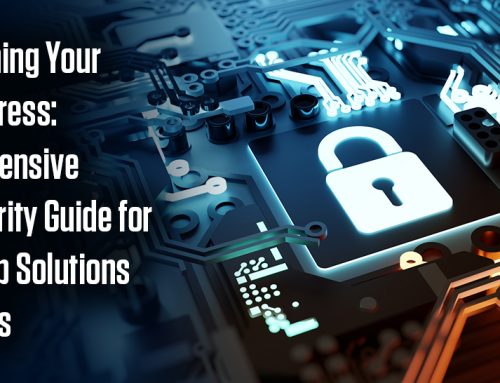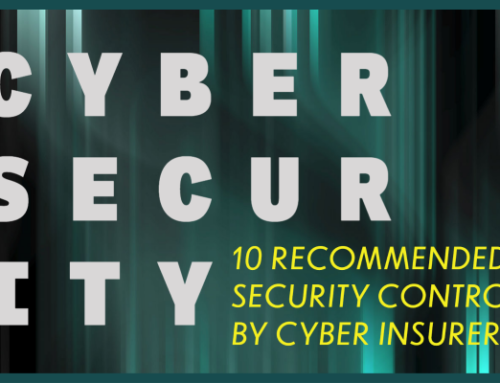Today’s blog post comes from Fightransomware.com, a place where you can get resources to help you prevent and protect against a ransomware attack. Our guest blogger is Eric Vanderburg!
Eric is an information security executive, thought leader and author known for his insight on cybersecurity, privacy, data protection, and storage. Some have called him the “Sheriff of the Internet” since he and his cybersecurity team at JurInnov protect companies from cyber threats, investigate data breaches, and provide guidance on safe computing.
Eric is passionate about sharing knowledge of cybersecurity and technology news, insights and best practices. He regularly presents on security topics and maintains a security blog. You can find him throughout the day posting valuable content on his social media channels.
The Economics of Cybercrime: Understanding the Ransomware Market

We all know money is the motivating force behind cybercrimes like the creation and distribution of ransomware. The interesting twist with ransomware is that the basic rules of supply and demand become a little hard to follow. Typically you have a buyer and a seller. In the case of ransomware, the distributor—or supplier—has to steal what’s in demand—your data.
Cybercriminals create demand by restricting access. Victims realize they need access and—if they cannot get access themselves by restoring critical files from backup—they end up paying the ransom and fueling this economy. This applies to online consumers, small business owners, and CEOS—they have all paid to retrieve data.
It’s interesting to consider the ransomware economy in the following five segments:
1) Investment
Cybercriminals leasing ransomware can obtain it for as little as $39 and as high as $3,000 depending on which type is purchased. They must then distribute it. Distribution costs include time spent creating and sending emails. According to Trustwave, an IT security team that spent time trying to dissect the ransomware economy, it would cost about $2,500 to spread 2,000 ransomware infections once you factor in the time to send emails and compromise sites.
2) Pricing
Ransom demands in the United States have been known to be several hundred dollars higher than the same ransomware in Mexico or other countries with lower median incomes than the U.S. Ransomware authors have researched regions and incomes—and they understand that they can only charge what the market will bear. Ransomware authors also consider the bitcoin exchange rate when determining the ransom demand. This helps cybercriminals set a ransom that victims can afford to pay regardless of which country they’re from. In the U.S., the average ask is between $300 and $500, according to many industry sources.
3) Target market
The target market for ransomware consists of consumers and companies that retain important or business-critical information, and have the ability to pay the ransom. Unfortunately, these people also typically aren’t adhering to IT security best practices. Hospitals and other healthcare organizations are a popular target for cybercriminals because of the pressure to pay up quickly, rather than risk patient health.
4) Revenue
Estimates as to how much has been paid in ransom tend to be conservative because many payments are undisclosed. That said, The U.S. Departments of Justice Internet Crime Complaint Center received reports of ransom payments totaling $24 million in 2015. And in July 2016, ransom payments for Cerber ransomware alone totaled $195,000 for the month. But the market is growing exponentially, and the FBI has said ransomware costs could total $1billion this year.
5) Competition
The relatively low barrier to entry has resulted in fierce competition among cybercriminals. Some ransomware authors and cyber-extortionists have even adopted higher levels of professionalism to make it easier for victims to pay up. And, in an interesting angle to the supplier side, ransomware kits are easily available and come with simple instructions, meaning that distributors can sell ransomware to new, smaller distributors—as long as they are guaranteed a piece of the profits.
The ransomware economy is booming and returns are high. That means you can expect the number of ransomware attacks to continue rising. Protect yourself by having adequate backups in place before a ransomware attack occurs. Test your backups to ensure that the right data is being protected and can be restored in satisfactory time frames. Also, ensure that a backup copy is kept in a different location from production data so that ransomware does not infect both at the same time.
For more news and information on the battle against ransomware, visit the FightRansomware.com homepage today.
And for more information on how you can consult with a local Portland-based company on all things security and IT related, contact Upward Technology!






[…] -Spam is big. Criminals are raking in billions of dollars using it. The majority of the most damaging malware uses spam to deliver its payloads. See this earlier article about how ransomware regularly uses spam. […]